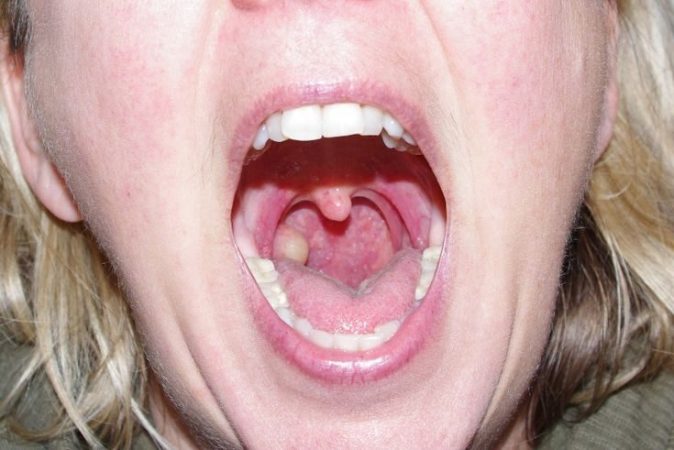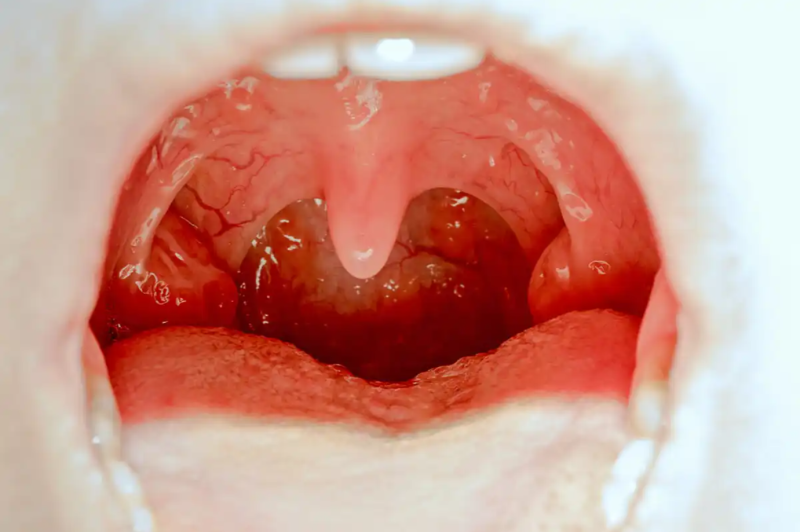
Pus in the throat is the product of the inflammatory process secondary to the tonsils or pharynx infection. This, in turn, can be caused by viruses or bacteria that manage to increase in the area. Often, it is accompanied by other symptoms such as a sore throat, difficulty swallowing, and fever.
The treatment of this condition is based on antibiotics in case of bacterial origin. In addition, it can include nonsteroidal anti-inflammatory drugs to improve pain and fever. If bacteria are not the cause, your doctor or otolaryngologist may consider other treatments. Do you want to know more about it?
Contents
Infections associated with pus in the throat
Although viral infections can cause the presence of pus in the throat, it is more common in bacterial infections. However, it should be noted that inflammation of the tonsils or pharynx is more frequent in viral pictures. This may explain the rarity of this symptom.
However, these infections are more common in preschool children (ages 2 to 6), pregnant women, and the elderly. They are also common among those who have diseases that compromise the immune system, such as cancer patients or carriers of the human immunodeficiency virus.
virus infections
The viral infection most often causes pus in the throat is infectious mononucleosis, derived from the Epstein-Barr virus. In this case, the pus is visualized as small whitish plaques on the tonsils that do not smell bad. In addition, other clinical manifestations occur, such as the following:
- General discomfort.
- Fatigue.
- Runny nose.
- Cough.
- Eye redness.
- low fever
However, sometimes viral infection can be caused by common cold viruses, such as rhinovirus, adenovirus, influenza virus, and respiratory syncytial virus. Less commonly, both the measles virus and the human immunodeficiency virus can cause it.
Bacterial infections
Bacterial infections that often cause pus in the throat are usually caused by strep pyogenes or group A strep. This is known as tonsillitis or strep throat.
In addition to the presence of such a symptom, it is associated with the following clinical manifestations:
- Pain that increases when swallowing.
- Fever.
- Headache.
- Abdominal pain, nausea, and vomiting (especially in children).
When the tonsils and pharynx are visualized, they will be red and enlarged, with a whitish or yellowish plaque with a foul odor.
Although it is not decisive, observing the characteristics of the pus in the throat allows us to establish a difference. In the case of bacterial infections, this pus is usually thicker, lumpier, can adhere to the palate or pharynx, and causes a terrible odor.
Likewise, if there is a bacterial origin, there are other clinical data, such as swollen glands in the neck or under the jaw.
The only way to confirm it is through a serological study of specific antibodies against the virus or by identifying the bacteria after taking a sample from the throat with a swab.
Are they always of infectious origin?
When the pus in the throat is not accompanied by symptoms of an underlying infection, such as fever, general malaise, and pain when swallowing, it may be the accumulation of food debris and secretions from the mouth on the tonsils.
These are tiny yellow or white balls called casein or tonsilloliths. If so, it usually manifests itself with bad breath as well. Fortunately, they can be removed with proper dental hygiene, mouthwashes, and gargling with warm salt water.
Can pus in the throat complicate?
When no proper infection is treated, pus can accumulate next to and behind the tonsils, creating a ” peritonsillar abscess .”
In this case, antibiotic therapy must be more aggressive, and drainage of the accumulated pus may require the tonsils to be removed. Its accumulation in the retropharyngeal space or the parapharyngeal area is also possible.

Treatment for pus in the throat
As we have discussed, the treatment depends on the cause of the infection, which a general practitioner or otolaryngologist determines. Often, the initial treatment consists of improving the symptoms.
Therefore, nonsteroidal anti-inflammatory drugs are indicated to reduce sore throat, swollen lymph nodes, and fever. These cover the following options:
- Ibuprofen.
- Diclofenac.
- Ketoprofen.
- Nimesulide.
- Naproxen.
In addition, for sore throat, sprays or mouthwashes containing dyclonine, phenol, or chlorhexidine may be indicated. By improving the sore throat, there is also an improvement in the difficulty in swallowing.
For viral infections, treatment consists of staying hydrated, resting, and taking steps to lessen symptoms. Meanwhile, if the pus in the throat is caused by strep throat, penicillin, amoxicillin with clavulanic acid, or azithromycin is indicated.
If there is no improvement in the inflammation of the throat, oral corticosteroids, such as prednisone, may be indicated. In any case, any of the pharmacological treatments must be taken under medical prescription.
Ultimately, one must remember not to attempt to remove the pus from the throat with a finger, Q-tip, or toothbrush. This worsens both the inflammation and the pain. Sometimes it even promotes the appearance of superinfections.